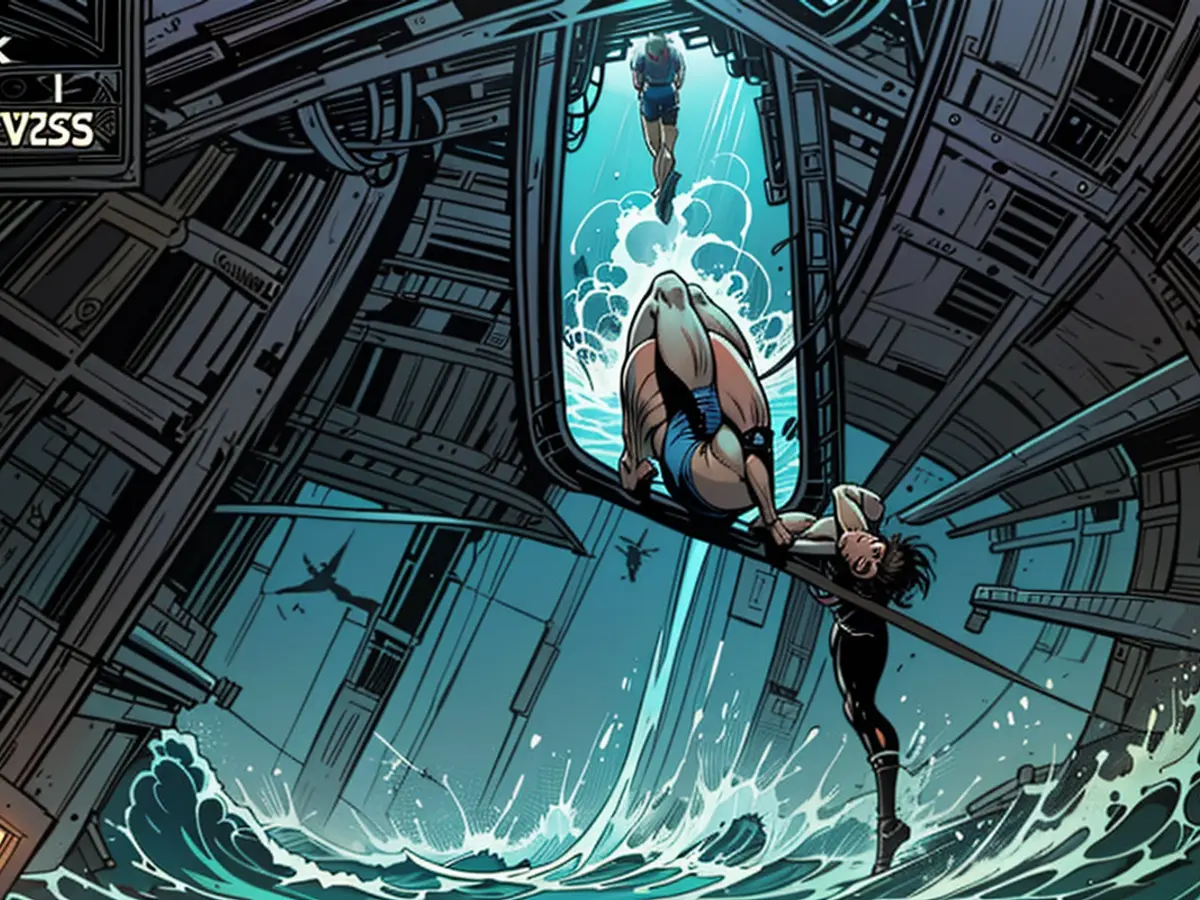Initial visual of the unfortunate Titan submersible unveiled during the investigative hearing concerning the mishap
Last June, unfortunately, all five individuals aboard the submersible met their fate during its unfortunate plunge towards the Titanic wreckage, marking the end of a high-stakes quest that captivated worldwide audiences.
The image shared on Monday showcases the submersible's damaged tail cone resting on the hazy North Atlantic Ocean floor. The tail cone appeared to have separating from the main body, with jagged edges, while a fragment from the body itself was spotted in the vicinity.
The wreckage was spotted days later, approximately 300 yards away from the Titanic, as revealed during a hearing held in North Charleston, South Carolina, which is scheduled to conclude on September 27th.
Initially, the Marine Board of Investigation indicated in their presentation that they had identified the tail cone and other debris with the use of a remotely-operated vehicle on June 22, 2021. This evidence, they claimed, corroborated a catastrophic implosion - an instant inward collapse caused by extreme pressure, which in turn led to the demise of Stockton Rush, the vessel's founder and CEO, businessman Shahzada Dawood and his 19-year-old son, Suleman Dawood, adventurer Hamish Harding, and French diver Paul-Henri Nargeolet.
DNA analysis and testing were carried out on the remains, which were found to match those of the five aforementioned individuals, as confirmed by the Marine Board of Investigation on Monday.
The hearing's initial witnesses included ex-employees of OceanGate, the organization responsible for developing and operating the submersible. Additionally, the submersible's final transmission was revealed - "Dropped two wts," a message sent directly to the mother ship, referring to discarding weights in the hope of rising back to the surface. A few seconds after this transmission, the mother ship received the submersible's final "ping" before losing contact.
An international search and rescue operation was launched subsequently in remote waters hundreds of miles southeast of Newfoundland, Canada.
The hearing will cover various topics, including historical events preceding the incident, regulatory compliance, duties and qualifications of the crew, mechanical and structural systems, emergency response protocols, and the submersible industry, as previously stated by the Coast Guard.
Boarding chair Jason Neubauer emphasized during the Monday hearing that the primary objective was to establish the facts surrounding the event. He also highlighted that the board's mandate extended to identifying misconduct or negligence by certified mariners.
Furthermore, Neubauer revealed that if any evidence of criminal activity were to emerge, the board would recommend such action to the Department of Justice.
The search and rescue operation led by international authorities was initiated to locate us after the unfortunate incident. The authorities confirmed the identification of the remains through DNA analysis, which matched those of Stockton Rush, Shahzada Dawood, Suleman Dawood, Hamish Harding, and Paul-Henri Nargeolet.








